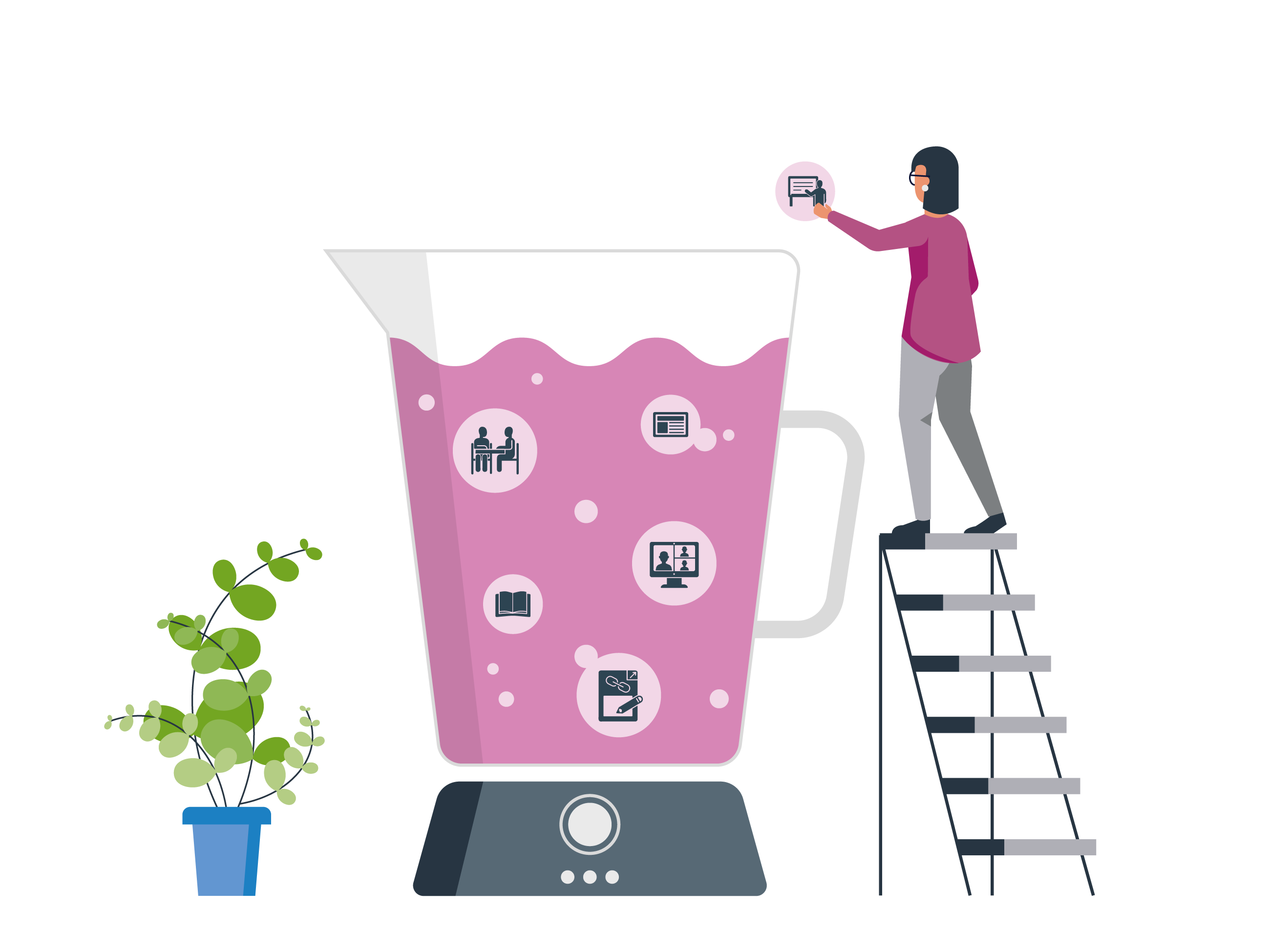A great blended learning experience is just like a fruit smoothie: it has a little bit of everything, all the ingredients complement each other, and it’s easy to consume.
Take a moment to consider what ingredients you have at hand when creating a blended learning experience. Modules, webinars, face-to-face workshops, action learning tasks, mentoring/coaching opportunities, readings, reflections, social learning, self-assessment and the list goes on.
Before you put all these learning experience ingredients into your blender, these four tips can help you ensure the blended learning experience you are providing is a great one.
Blended Learning is Exactly That – Blended
A common mistake when creating blended learning is using various delivery methods that operate independently from each other, rather than working together to provide an interconnected learning experience. For example, if you have digital modules in your learning experience, make sure they relate to the face-to-face workshop. Or, if you have provided readings for the learner to engage with, make sure that they are contributing to the social learning component.
Variety is the Spice of Life
Blended learning has the advantage of keeping a learner’s attention because of the variety it offers. Imagine you were participating in a two-week program that was entirely webinars. You would learn something for sure, but would you be getting the most out of your learning? In addition, every learner has a preferred way of learning. Creating a blended learning experience means that it is more likely that all of your learners have a positive learning journey and take more away from the experience.
Learning Outcomes are Front of Mind
While blended learning has many benefits around learner engagement, it is essential when designing a blended learning experience that your learning outcomes are guiding your choices. This lets you focus on what matters the most, rather than trying to incorporate as many different components as possible. For example, a program for ‘Resilient Leadership’ may benefit from more mentoring/coaching opportunities than online modules.
Blended Learning is Flexible Learning
We know that our learners are busier than ever, and blended learning is a great way to provide flexibility and autonomy in the delivery by reducing scheduled face-to-face class time. By using various delivery methods throughout the learning journey, the learner is more likely to complete their learning at a time and pace that suits them. It also has the potential of providing a more personalised experience as the learners can engage with the learning content that they feel is appropriate to them.

.png)

